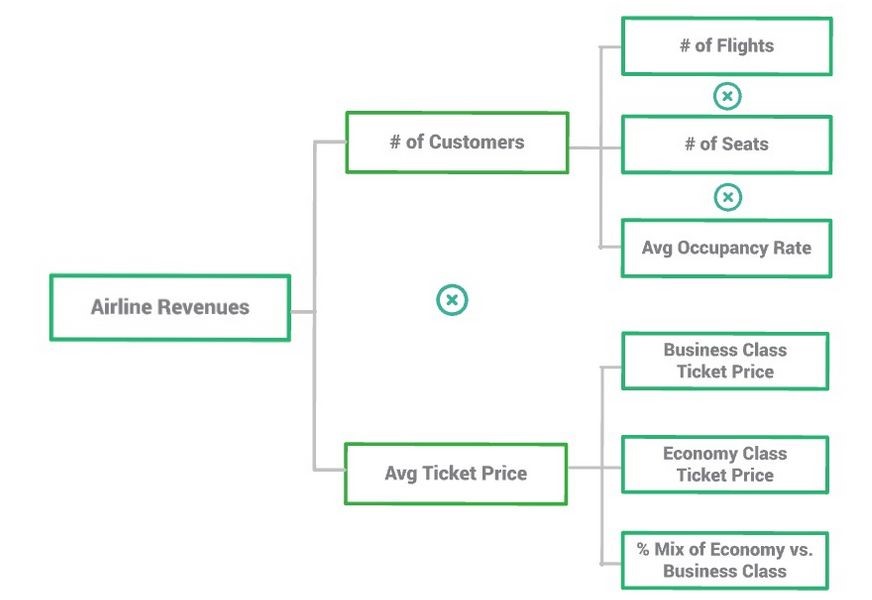At the right time, making the right decisions is not just a matter of luck, although sometimes luck may play a part! No, a planned and reasoned approach to tackling complex business problems will make results more reliable and consistent. This is where a method such as “issue trees” comes in.
Like McKinsey, many elite management consultancy firms use issue trees to break down complex business problems and propose solutions. You can find plenty of online resources to learn the intricate details of issue trees, plus there are plenty of books on the subject.
Here, we will look at the basics and learn how to use the issue tree concept to develop your solution.
Do I Need a Method?
But all too often, what starts as a relatively simple issue, can soon grow into something so complicated that there doesn’t appear to be a solution. At this point, several pointers may indicate that you need a method;For simple problems, the effort of following a method may outweigh the benefits. It could take more time to develop the plan than it takes just to dive in and sort the issue out.
- Significant facts can be missed or neglected
- You get trapped in irrelevant details
- Getting to a decision point takes far too long
Top management consultancy companies use methods such as issue trees for their clients. They are the perfect tool for helping to solve your complex business problems.
Should I Use Frameworks or Issue Trees
When you hit a business problem you can’t solve, there are many management consultants out there to help. However, many have developed their personal “frameworks” for solving complex problems.
Over time, they would have built a set of frameworks that they adapt to cover any situation. The difficulty here is that the framework is generic and not a specific solution to your problem.
Using issue trees, you can develop a tailored solution to each problem you encounter. No longer will you be trying to squeeze your problem into a framework that simply doesn’t fit.
Exploring Issue Trees
Issue trees have a set of simple rules that can be used together in infinite ways. This article is too short to cover them in any detail, so we’ll concentrate on the foundations.
Break the Problem Down
The first step to resolving a problem is to realize that most problems are a combination of many smaller issues. So the basic principle is to break down a significant problem into a set of more minor issues. These individual issues become the branches of your issue tree. This process is repeated, breaking down problems into a set of increasingly smaller issues.
Segment the Problem
While breaking the problem down produces a set of small problems, segmentation aims to group the issues together. There are multiple ways to segment a problem, and each will have its pros and cons. The aim is to segment the problem in a way that makes finding a solution easier.
If your company is struggling with profitability, then a financial segmentation would help. Split the company’s finances into branches for revenues and costs. Lower branches would then split into fixed costs and variable costs. The income side would be divided into the different income streams the company has.
Make Sure You Follow the MECE Rule
Whichever segmentation method you use, every branch of your issue tree must follow the Mutually Exclusive and Collectively Exhaustive (MECE) rule. Adhering to the MECE rule will ensure that your segmentation covers all possibilities.
Mutually Exclusive (ME), means there should be no overlap between issues. Collectively Exhaustive (CE) means that all possibilities must appear in your issue tree.
For example, if you segment the data for all the cars made in the UK into white cars or cars made before 1960, you have not followed MECE.
- The segmentation is not mutually exclusive. The two segments overlap, as a white car can have been made after 1960.
- The segmentation is not collectively exhaustive. You have not included blue cars and red cars made before 1960.
The Benefits of Issue Trees
Logical Connections Between Issue Tree Branches
Breaking down a complex problem into separate issues allows you to work on each small problem individually. Also, you can now visualize how individual issues are related and interact. This connectivity gives you a better overall view of the entire problem and its solutions.
Hypothesis
With the potential factors of the problem split into individual issues, it is easier to hypothesize which particular issue is the cause of your problem. This is known as the Hypothesis Driven Approach and gives you a starting point without needing to check all the issues.
Efficiency and Speed
Splitting a complex problem into smaller issues allows your team to simultaneously work on individual aspects of the problem. In this way, the team will find a solution to the more significant problem in less time.
Different types of Issue Tree
As with many problem-solving methods, variations have been developed. Two common issue tree variants are the problem tree and the solution tree.
Problem Tree
The method we have been discussing until now is an example of the problem tree. You start with the business problem and break it down into smaller constituent issues to find the root cause.
Solution Tree
Once we have discovered the root cause of a problem, we can employ a solution tree to find a solution. Starting with the root cause, a tree is developed where solutions are proposed. Each answer is broken down into a series of steps required to implement the solution.
Each possible solution is evaluated to find the most suitable fix to solve the problem.
Final Thoughts
We have briefly scratched the surface of issue trees in this article. But hopefully, you can see the numerous advantages they have over frameworks for problem-solving.
As with any theoretical method, putting it into action is the key. The next time you have a complex business problem to resolve, try using issue trees with your teams. Try brainstorming for the first branches of the issue tree, and develop your solution from there.





Like this article? Share with your friends!